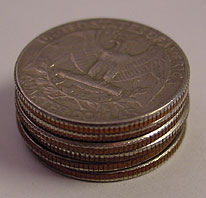

Most coin stacks have the holes in the stack perfectly centered on the individual coins. I prefer to make the holes slightly offset for a more natural appearing stack.
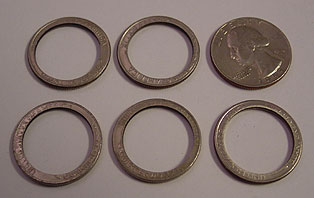 The
individual coins with their off center holes are shown here.
The
individual coins with their off center holes are shown here.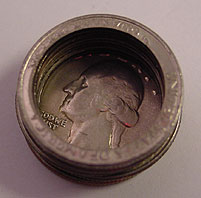
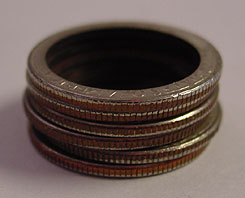

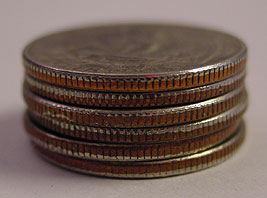
For those who have no acess to a metalworking lathe ...
I will describe this process only (no pictures). For each hollow coin in the stack the following is done:
1. Using a permanent marker, draw a circle where you want to remove the metal.
2. With a drill press and small drill bit, drill a small hole inside of the inscribed circle of each coin. Clamp the coins down to prevent injury while drilling.
3. Using the piercing saw (as used for making the folding coin) with the blade threaded through the small drilled hole, carefully saw out the center of each coin. Follow your marker line on the coins. The blade cuts on the down stroke.
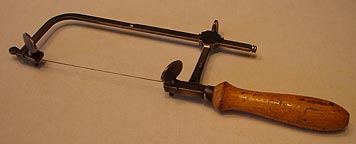
4. Smooth up the interior coin cuts with some fine grit sanding cloth/oil and you are ready to solder things together.
Options:
1. Coin holes may, of course, be centered to make an even looking stack.
2. On larger coins than the quarters shown above three pins or rivets can be used to secure the coins rather than soldering. I have found that soldering holds things very securely and the pins/rivets are not really required.
3. On larger coins I sometimes drill three aligned holes in each "coin ring" slightly larger than the the three pins I intend to use to hold the stack together. The facing coin has these holes the same size as the pin and only half way through the coin. The pins are soldered on to the full coin. The "coin rings" are next stacked onto the pins. The bottom "coin ring" has the holes drilled clear through the same size as the pin. The bottom "coin ring" is soldered on to the pins. This creates a coin stack in which the coins between the top and bottom may be slightly shifted around as in a real coin stack. The only real disadvantage of this stack is that the loose "coin rings" may "talk" during certain moves. This stack is only for the very skilled manipulator and is rather expensive.
4. On coin stacks of fewer coins, you might want to hollow out the top coin to make more space within the stack.